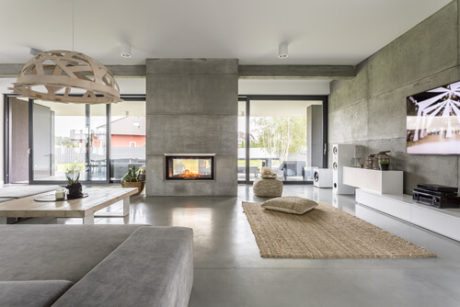 It’s easy to read magazines and conclude that your home is a danger to you and your family. But, as anyone can see, people are living longer, healthier lives than ever. Nevertheless, there are real risks associated with some remodelling projects. Some simple precautions can help minimise them.
It’s easy to read magazines and conclude that your home is a danger to you and your family. But, as anyone can see, people are living longer, healthier lives than ever. Nevertheless, there are real risks associated with some remodelling projects. Some simple precautions can help minimise them.
Several potentially harmful gases can build up inside homes, especially newer ones that are often extremely well sealed. Radon is one of the more well-known names.
Radon is a radioactive gas produced as a by-product of the natural decay of uranium, found in trace amounts in many rocks and soils. While there’s some evidence that in small amounts it might actually be beneficial, everyone agrees that too much can be harmful.
Measure the amount, particularly in basements and other enclosed areas, using an inexpensive device available online. Follow guidelines listed about whether to call a professional to deal with any found. Four picocuries are the EPA (Environmental Protection Agency) figure for recommended action.
Take that into account when planning basement remodelling projects and allow for adequate venting. While long-term exposure can be harmful, it’s extremely rare for there to be enough present to represent the immediate danger. Don’t fear to go into your basement.
Nitrogen dioxide and carbon monoxide are two more potentially harmful gases. They can both be produced in excess of recommended levels by poorly ventilated gas stoves or incorrectly installed appliances. Gas dryers and water heaters, for example. Wood stoves can produce substantial amounts, too.
Be sure to follow manufacturer’s guidelines when installing or replacing these. Keep them and ducting clean and all connectors tight. Devices similar to radon detectors can help measure levels of NO2 and CO.
There are several sources of health risks around the home besides gases. Dust is one common source.
Regular vacuuming with a machine fitted with a good HEPA filter is helpful. But replacing carpets, cabinets and other home projects can produce above average amounts. Be prepared to vacuum a little more often during those times, even though you’ve eliminated the visible effects, such as wood chips and large carpet shavings.
Dust mites are one of the nastier villains around the home, contributing to allergic reactions. Their waste products are believed to be responsible for the effect, but it can be minimised.
They live, as their name suggests, in dust and can build upon carpets, curtains and elsewhere. Naturally, there’ll be fewer when these items are being put in new, but installing them often kicks dust up into the air.
Again, a good vacuum will help control the problem. Wash curtains, sheets and bedspreads in hot water when possible. When the material doesn’t allow that, they can be treated with inexpensive sprays that kill the mites or prevents them from reproducing. Air filtration systems are available that help reduces the concentration of mites, along with lots of other particulates.
Dust mites aren’t the only living creatures sharing your home. mould and mildew grow in moist, dark places and ducts are a prime candidate. Replacing ducts can stir up dust and release mould spores into the air.
Regular filter changes and proper vacuuming and cleaning of your heating and air conditioning ducts will keep them from presenting health risks.
Regular, common sense safeguards can help keep your home healthy and safe. The sky isn’t falling, but it could use a few nails from time to time.






-
Add a note